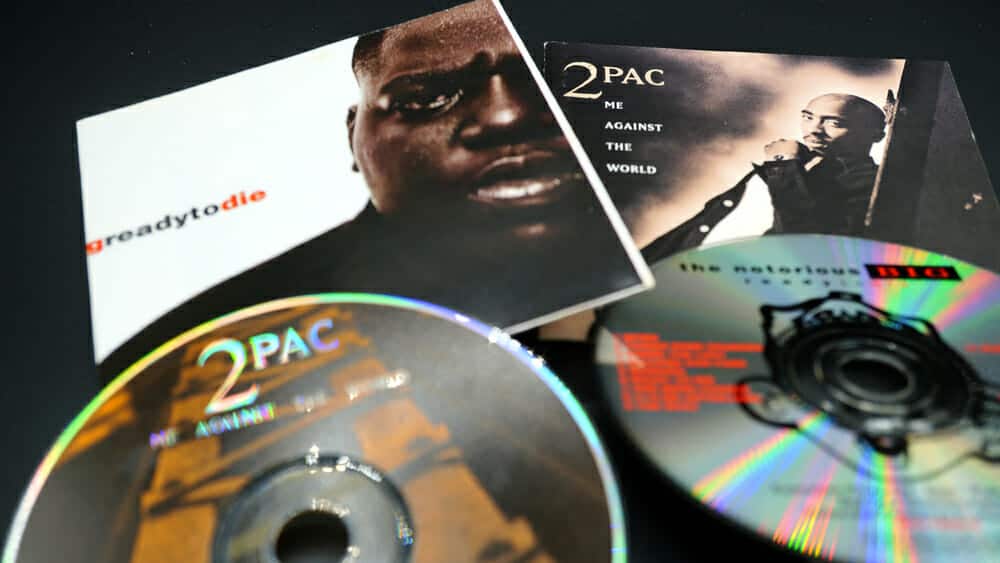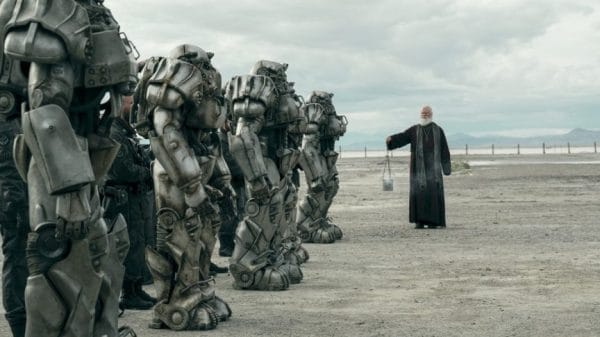As the 50th Anniversary of Hip-Hop approaches, we continue our look back at some of hip-hop’s most important artifacts. We’ve already discussed what we thought were hip-hop’s most important songs. Some stated that we couldn’t make a list of influential tracks and not have a follow-up. As a result, we tipped our hats to hip-hop’s most brilliant albums.
Hip-hop has produced a lot of iconic moments over the last half-century. Within those moments, one can reminisce on the defiance of NWA, Lil Wayne winning the Grammy, and the debates on whether quantity matters more than quality. You can also look back and think of the dark times.
At the turn of the 90s, hip-hop began to witness a hardcore Renaissance. By this time, the West Coast had risen to prominence, taking over the media’s interest. With its brash, in-your-face, anti-authority-laced lyrics, California became the West’s Coastal Flag-Bearer. While on the other side of the nation, hip-hop’s birthplace saw its vice grip loosened. This paradigm shift would create a domino effect that put American music at the center of one of the most infamous yet influential feuds ever. Who fired the first shots? What were the reasons? Who were the biggest names involved?
Tensions Rising
At the dawn of the 90s, rap music was going through a face-lift. Names like Ice-T, 2Pac (more on him later), Digital Underground, A Tribe Called Quest, KRS-One & Boogie Down Productions, and Public Enemy are just a few names that helped usher in the golden age of rap. As a result of gangsta rap taking the helm as hip-hop’s premiere sound at the time, it was countered with a jazzy, friendly, upbeat alternative style of rap. Eventually, these two different styles would compete for supremacy.
Depending on who you ask, the first shot was fired on November 12, 1991. The Bronx, New York’s Tim Dog released his debut album Penicillin on Wax. Within the album is the West Coast diss track Fuck Compton. The song contained jabs at some of the West’s rappers. “The boy ain’t shit chew him with tobacco, an’ spit him in shit,” these lyrics were a dig at Eazy-E. The rapper further antagonized the culture within West Coast Rap, “Take your jeri curls, take your black hats take your wack lyrics and your bullshit tracks.” As one can assume, the release of Fuck Compton triggered a domino effect that’ll involve a rising star from Long Beach and a Compton producer who is in the middle of a feud of his own.
The Rise of Death Row Records
After an acrimonious split from NWA and Ruthless Records, Dr. Dre, alongside his cousin The D.O.C, Dick Griffey, and Suge Knight, founded Death Row Records. A year after its 1991 founding, Death Row rose to the forefront of hip-hop. After appearing on the title track for the 1992 film Deep Cover, Dr. Dre would produce and record his debut solo effort and Death Row’s first full-length album, 1992’s The Chronic. We’ve already discussed this timeless album on a previous list, but it warrants further mention.
About two years after the release of Fuck Compton, Dr. Dre responded with the diss track Fuck Wit Dre Day. The song took shots at Tim Dog, Uncle Luke of the 2 Live Crew, and Dre’s former bandmate Eazy-E. Ironically, it wasn’t Dre, that dissed Tim Dog, but his protege, a young Snoop Doggy Dogg. “Your bark was loud but your bite wasn’t vicious,” Snoop raps on the song. “And the rhymes you were kicking were quite bootylicious.”
While tensions would on both sides of rap reach a stalemate, the climax was yet to come. Around this time, a young man who started as Andre Harrel’s intern, later A&R, was fired from the label after their tensions rose. This young executive would be responsible for bringing a Bed-Stuy, Brooklyn rapper to the game. However, this will add fuel to an already burning fire.
The Rise of Bad Boy Records
After his departure from Uptown Records, Sean “Puffy” Combs founded Bad Boy Records. The young producer immediately got to work on two of his personal projects. The first was the debut album of Christopher George Latore Wallace, otherwise known as The Notorious BIG. This first album would re-establish the East Coast (New York in particular) as one of the top destinations in hip-hop.
In 1994, Bad Boy released two star-making albums that would forge the path going forward. The Notorious BIG’s Ready To Die, in September 13. The record peaked at #15 on the Billboard Charts and, as of 2020, is 6x platinum certification from RIAA. But, that was only the beginning. One week after the album’s release, Craig Mack Released Project: Funk Da World. As of 2020, the album is certified Gold by RIAA. With two of his top stars already on the charts, Combs inserted himself as one of the best producers in the country. However, the tensions between East and West would explode just two months later.
The Quad Studio Shooting
On November 30, 1994, a fateful Wednesday night, armed men rushed the doors of Quad Studios and attacked 2Pac, who was at the studio to record with Puffy and the rest of Bad Boy. In what appears to have been a robbery gone bad, the rapper was shot five times in the melee. For 2Pac, this couldn’t have come at a worst time. Around the time of the Quad Incident, 2Pac was facing charges of sexual misconduct from an incident that occurred one year earlier.
In the aftermath of the shooting, Shakur was sentenced to one and a half to 4 and half years in prison. While incarcerated, things would take a drastic turn. For starters, 2Pac’s fourth studio album All Eyez on Me was released while incarcerated. Upon signing with the label, Suge Knight and Death Row affiliates paid Shakur’s bail, and as a means of reimbursement, he signed a three-album deal with the label. Since this is a double album, it narrows Pac’s Death Row obligations to just one final album. To make matters worse, his one-time friendship with Biggie was over.
’95 Source Awards
On August 3, 1995, one of the most tense award shows occurred. The 2nd Annual Source Awards will end in infamy as the two Coast traded verbal blows during their acceptance speeches. The most infamous of the speeches came from Death Row CEO Suge Knight “I would like to tell 2Pac to keep his guards up, we with him,” Knight said. “Any artist out there who wants to be an artist and stay a star don’t have to worry about the executive producer all in the videos, all on the records, dancing, come to Death Row!” That statement is a direct shot at Puffy and his, more often than not, cameos on tracks and music videos.
Biggie’s response to Death Row’s CEO by saying, “Yo I got much love for everybody in here,” he stated. “Good looking out to Meth, to Brat, to Warren G and everybody.” The last name in the response Warren G is particularly interesting. Warren G is the in-house producer and rapper for rival label Death Row. But the most interesting part of the night doesn’t go to the East or the West, but the South.
Rap Duo Outkast (Big Boi and Andre 3000) won Best New Artist after a stellar rookie year in 1994. The hostile New York crowd did not accept the newcomers showering the duo with boos. After a few words from Big Boi, Andre 3000 called out the rap world by simply stating, “the South got something to say.” That moment would catalyze their rise to superstardom and the Rise of the Dirty South.
But at the time, the feud between East and West dominated mainstream media.
A War of Words!
It is heavily speculated that The Notorious BIG’s song Who Shot Ya? is a diss at 2Pac and is a result if the Quad Studio Shooting. “Who shot ya? Separate the weak from the obsolete,” the song said. “It’s on n—–a, fuck all that bickering beef.” While the lyrics seem to attack 2Pac head-on, others have disputed this. In an article by Phil Smith of Dig magazine, he further disputes the claim that the song was about Shakur. “Biggie denied that Who Shot Ya?’s lyrics were inspired by Shakur’s attack,” Smith wrote. “lines such as “Slaughter, electrical tape around your daughter” supported his claims.” Nonetheless, this would only further add to the animosity between the two rivals.
Over a year after the events of the shooting, 2Pac responded on one of the greatest diss tracks ever made. In the song Hit ’em Up, 2Pac explicitly names those within Bad Boy Records. The song opens with a bold claim from the iconic rap star. “That’s why I fucked your bitch.” This was a reference to the rumored affair 2Pac had with Faith Evans, who is the ex-wife of Biggie. He also called himself and the others at Death Row Records “Bad Boy Killers.” This would bring the feud to a climax, but tragedy was on the horizon.
The Death of 2Pac
On September 7, 1996, Mike Tyson took on Bruce Seldon in a heavyweight title fight. At the event, Shakur confronted Orlando Anderson after a previous altercation with some from Shakur’s camp. Without a word, 2Pac struck Anderson, and the others joined in on the attack. As 2Pac and Suge Knight were at a red light, an unknown assailant opened fire on the car carrying Shakur and Knight. Shakur was struck four times, twice in the chest. The rapper was sent to the intensive care unit where he would die six days later. The cause of death is listed as respiratory failure.
The Death of The Notorious BIG
On March 9, 1997, following that year’s Soul Train Awards, Biggie was shot and later died from his injuries. Wallace and Pac’s deaths were similar. Fifteen years after his death, BIG’s autopsy became public. Only one shot from that fateful night was fatal. This shot entered his hip and struck his colon, liver, heart, and left lung. One month before Biggie passed, Snoop Dogg and Puffy attempted to hold a press conference to create a truce. Their efforts fell on deaf ears.
Legacy
Does this rivalry have a legacy? Yes. The entire period during this coastal feud has proven to be influential. What emerged from the rivalry did help mold and shape hip-hop into what it is today. Artists like Snoop Dogg, Dr. Dre, Diddy, all of Bad Boy, and Death Row became household names. The G-Funk production style that dominated music in the 90s became a leading sound over the last three decades. NWA, 2Pac, and Biggie have all been enshrined in the Rock-n-Roll Hall of Fame. Finally, the music on both ends is timeless.
With August on the horizon, the 50th anniversary of hip-hop is in our sights. We discussed some of the best tracks and albums ever made. We talked about how the East and West came to blows. But what about the media? When hip-hop came along, who took a chance and helped the genre become what it is today? How did TV and Film play a part in hip-hop becoming a top sound in the World? We’ll answer those questions soon when Hip-Hop Turns 50: Media Presentation.














